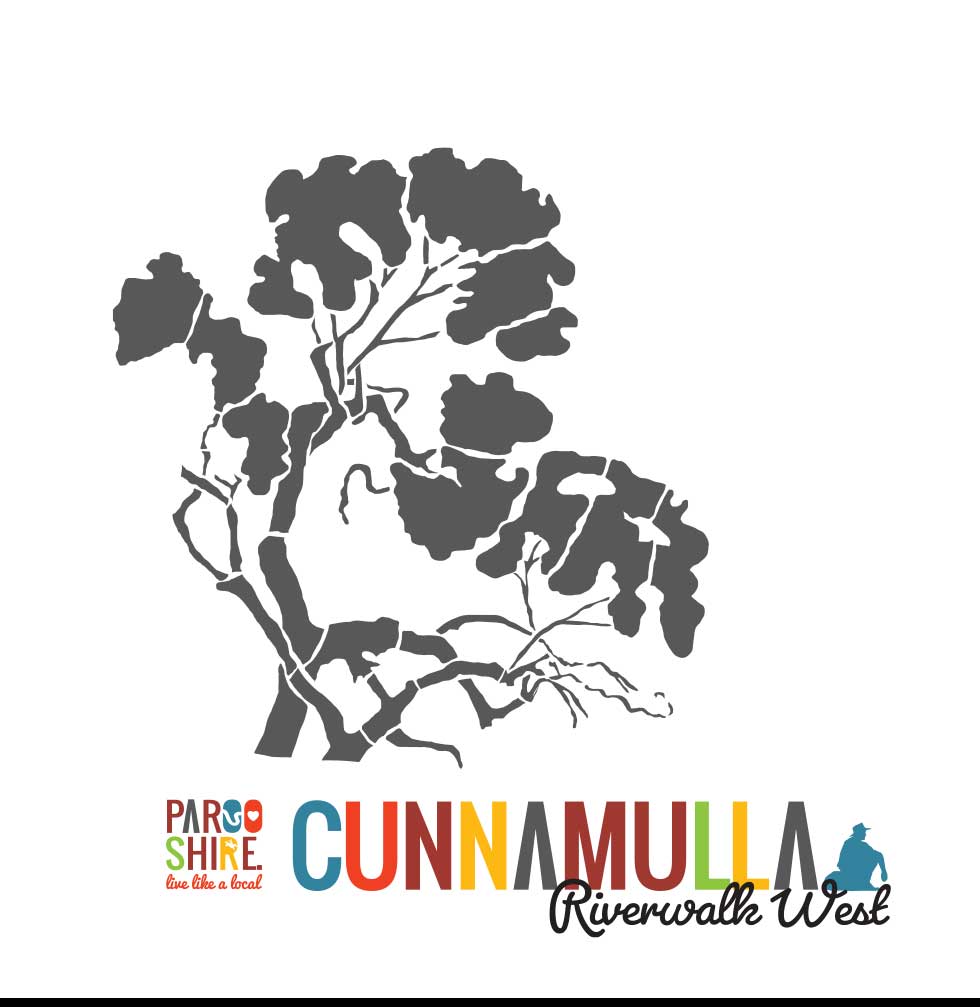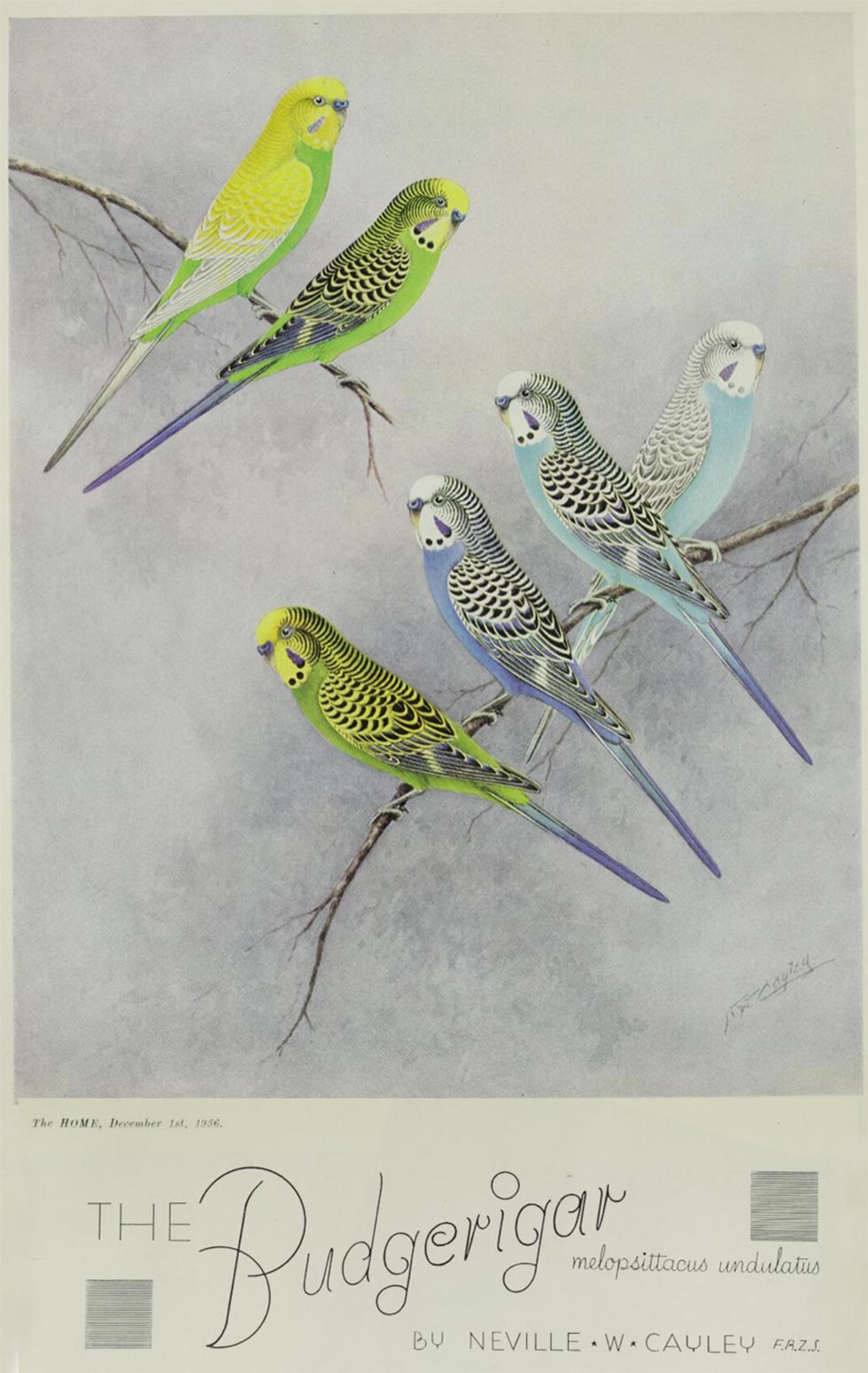

a story as told by Neville Cayley in 1936 ...
Nearly one hundred years ago a little Australian Budgerigar was taken abroad as a curiosity of the Parrot world.
Today the species is world-famous, and is to be found in almost every aviary throughout civilisation, the history of their popularity making a most romantic story.
So far as is known, the Budgerigar was first scientifically described and figured in the Naturalists’ Miscellany , published in 1805, probably from a specimen collected by an early colonist somewhere in the vicinity of historic Parramatta, N.S.W.
The usual habitat of these birds is inland, and they are not often seen in the coastal districts of Australia except during dry times.
Records show that about the period mentioned the colony was suffering a drought, so that the probability is that the first recorded specimen was taken nearer to Sydney Cove than usually would be the case.
The next important record was published in 1837, when John Gould, the Bird Man, one of the greatest ornithologists the world has known, in his Birds of Australia and Adjacent Islands (Gould’s Suppressed Plates) included an excellent plate drawn by his talented wife, figuring two adults and an immature bird, which was far superior to many later illustrations.
The name of John Gould has been honourably perpetuated by the Gould League of Bird Lovers, which has in N.S.W. alone more than one hundred and thirty thousand members.
Gould visited Australia in 1838, and on his return to England two years later began the publication of his monumental work on the Birds of Australia. His observation of the Budgerigar was most comprehensive, and it is doubtful if anyone since has added much to our field of knowledge of this fascinating little parrot.
Apart from the magnificent collection of Australian birds and mammals, a large number of which are now housed in Philadelphia, U.S.A., Gould also took back to London two live Budgerigars, and to him seems to be the honour of introducing to Europe one of the most popular parrots in the world.
Soon afterwards practically every ship from Australia carried its quota of Budgerigars, and very soon they were being bred in Europe as readily as canaries.
The Countess von Schwerin, of Berlin, is credited with having bred the first of the species in captivity in 1855.
Begun in the most modest fashion, by amateurs, the cult of the Budgerigar became so popular that breeding establishments soon assumed the proportion of industrial undertakings.
Belgium and Holland were the first to breed the birds on a large scale, to be quickly followed by France and Germany.
Today large Budgerigar farms are established throughout Europe, Russia, America, Japan, and in a lesser degree in Australia, the home of the species. Some idea of the magnitude of these establishments may be gained from a description of “Fes Perrucheries Bastidc” at Toulouse, France, known as the town of violets as well as the parrakeet capital. M. Bastide, the father of the present owners, was a vigneron, but he also hawked birds for sale, carrying his wares in a huge caravan when visiting the fairs held in the vicinity of Toulouse, and it must have been an astonishing sight to see the dazzling display of many-hued birds fluttering and chirping in cages among the copper and glass beads which decorated the interior of the caravan.
Visiting Belgium, he procured a stock of Budgerigars, and devoted himself altogether to the rearing of these birds on a commercial basis. In 1888 he had over forty aviaries, stocked with about fifteen thousand Budgerigars, and the establishment con tinued to grow, until in 1914 there were nearly three hundred aviaries and a huge open-air rearing ground, covering over two acres, and populated by over one hundred thousand birds, which unfortunately had to be sacrificed to the cause of patriotism when France was plunged into the throes of the World War.
When nations war, death stalks not only man but innocent birds and beasts. These aviaries have since been re stocked, and the industry still prospers.
After the war interest in Budgerigars was intensified, by reason of the colour varieties which were being produced by enthusiastic breeders.
During recent years associations devoted to the study of Budgerigars have made their advent, and their growth throughout the world has been phenomenal, and systematic breeding on scientific lines is being carried on more extensively and suc cessfully than ever before.
Scientists have become interested by reason of the fact that the Budgerigar is a splendid subject for experiments in the Mendelian laws of inheritance. Following theoretical expectations, already more than one hundred colour variations have been produced, and the possibilities of many more are unlimited.
When and how colour varieties originated is not definitely known. A yellow bird first made its appearance in Holland about 1870, probably being a chance sport or aberration, as sometimes happens, although extremely rare in nature. Careful and scientific breeding from that coloured aberration is no doubt responsible for the great advance in the variety of colours to be found today in aviary-bred birds. The first blue Budgerigar also made its appearance in Holland about 1880, but this variety seems to have been lost until 1910, when it was resuscitated by a Belgian breeder.
By reason of its adaptability, hardiness and prolific breeding propensities, the Budgerigar is an ideal aviary bird, and so when it was proved that it was susceptible to beautiful colour variations its popularity became greater than ever, and it was only a matter of time, with aviarists in every part of the world experi menting intensively, that so many new types should have been evolved.
The accompanying illustration is a diagram to show Exhibition Types of Budgerigars, and it will be seen that the Budgerigar in the wild might be generally described as green and yellow with black undulated markings.
In modern aviary-bred birds the colour variations are chiefly graduations and combinations of yellow, green and blue.
The yellows range from light yellow to olive yellow, the greens from light grass-green to deep olive green, and the blues from pale sky blue to deep cobalt and dull violet.
By reason of the beautiful combinations of colour now being produced it is no wonder that the Budgerigar is the most popular bird in the world.
With the introduction of colour variations, the value of Budgerigars soared skywards. It is understood that the first pair of natural birds imported into England realised £26, but prices gradually dropped as shipments arrived from Australia until in 1868 pairs were being sold at from 12/- to £l.
For the rarer coloured varieties, values have fluctuated considerably, reaching their zenith in 1927 when incredible prices were paid.
At one time it must have seemed that the export of Budgerigars would threaten the position of sheep as Australia s major industry, for a pair of Blue Budgerigars were sold to Japan for the sum of £125.
In Europe, however, prices seemed still more fantastic.
The catalogue for the second annual show of the Budgerigar Club of England, held at the Crystal Palace, London, in 1927, gives the reserves in the sky blue and cobalt classes at prices ranging from £5O to £175 for single birds, and from £lOO to £5OO for pairs.
This section of the show was humorously referred to as “the millionaires’ corner.’ Sad to relate, these very same varieties can now be purchased for only a few shillings per pair.
However, the bottom has not dropped right out of the market and as much as £lO is still being paid for choice exhibition types.
The Budgerigar is one of the few Australian birds known by their aboriginal names, other examples being the Kookaburra and the Boo book Owl. The word itself is derived from bugeri—good, and gar—food, and it can be easily imagined how the aboriginals relied on these pro lific little birds for a change of diet.
It has been spelled in different ways such as Betcherygah, Betcherrygar, Budgerygah. Boodgereegar and Budgerigah, but the spelling, Budgerigar, is now universal, having been officially adopted by the various Societies and Clubs throughout the world.
Australia was late in showing appreciation for her own charming miniature parrot with its quaint ways and friendly disposition. Before the present century, few, if any, attempts were made to breed Budgeri gars in captivity as the overseas market could be so easily supplied with free birds, but with the importation into Australia of several pairs of the yellow variety in 1900, their progeny were eagerly sought after and from that date Australians have caught up to the rest of the world in their appreciation of their own fascinating little bird.
In every State of the Commonwealth there are now Societies and Clubs specialising in the Cult of the Budgerigar with the result that Australia is now ahead of the rest of the world in the production of colour varieties.
Not only have all the known varieties been reproduced, but a new group has been successfully evolved and established known as the Clearwings, such as white-winged blues and yellow-winged greens, the most beautiful varieties yet seen.
Due, no doubt, to the natural climate, Australian-bred birds show a marked improvement in depth and purity of colour to similar varieties bred overseas.
The latest variation, the Cinnamon-wing group, seem to have been evolved almost simultane ously in Australia and overseas, and this new colour factor has opened the way for still further experiments. Briefly, such is the story of a little Australian bird which left Australia unhonored and unsung to return years afterwards to the land of his origin decked out in a coat of many colours and world famous.


9. Meatants
1. Entry
